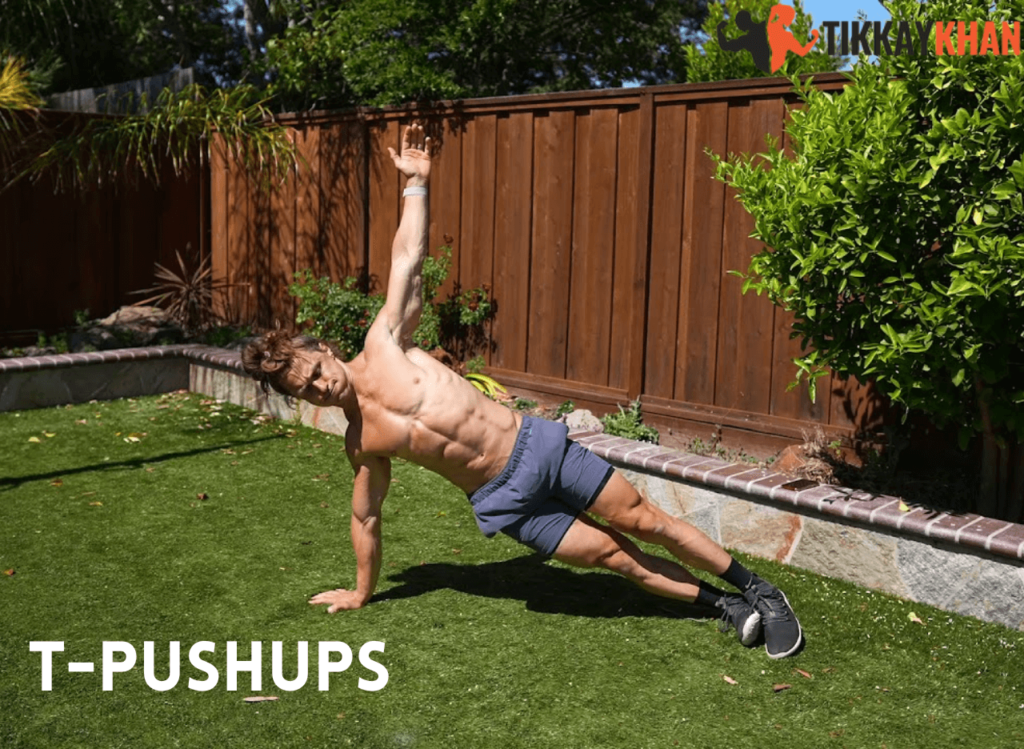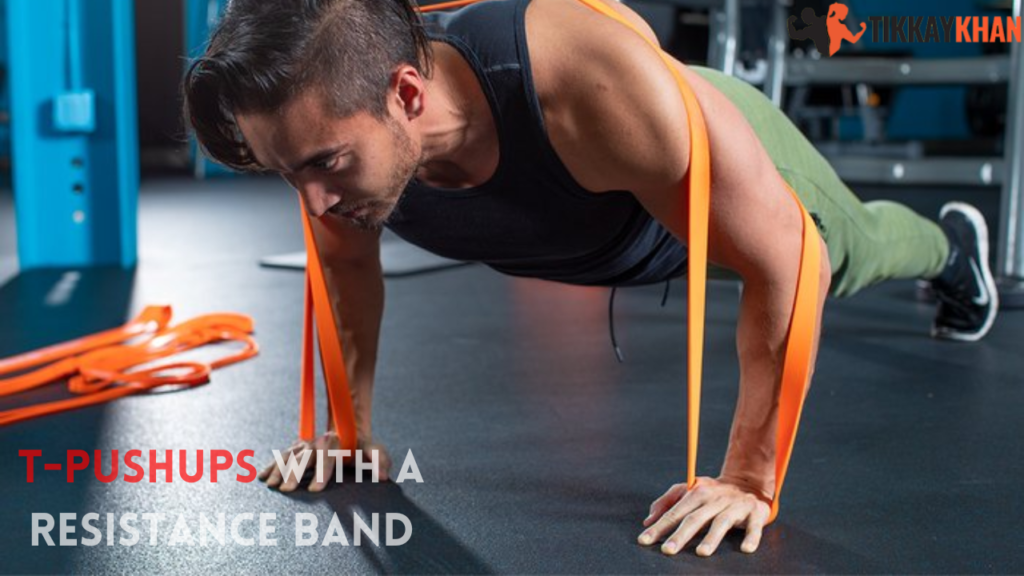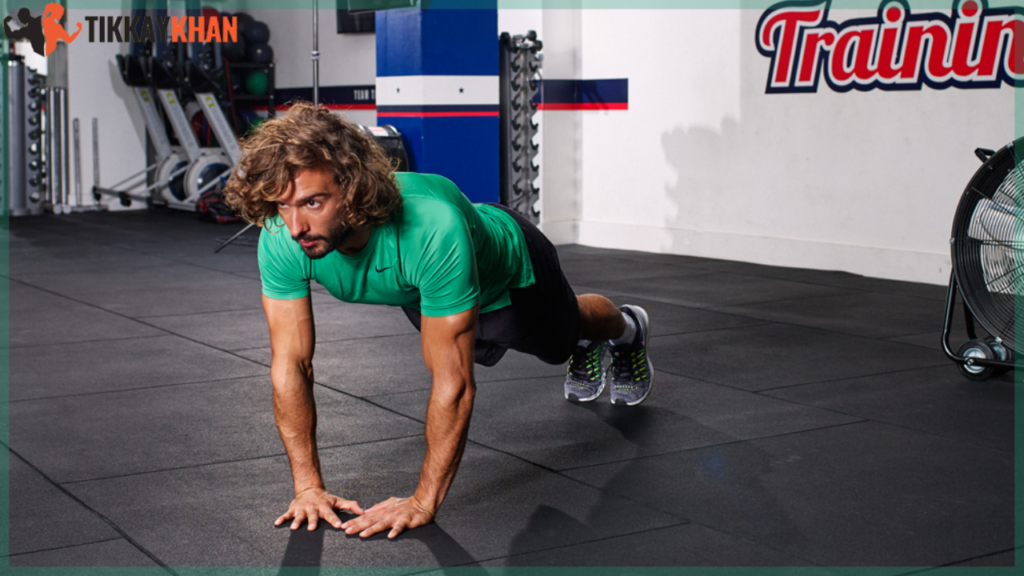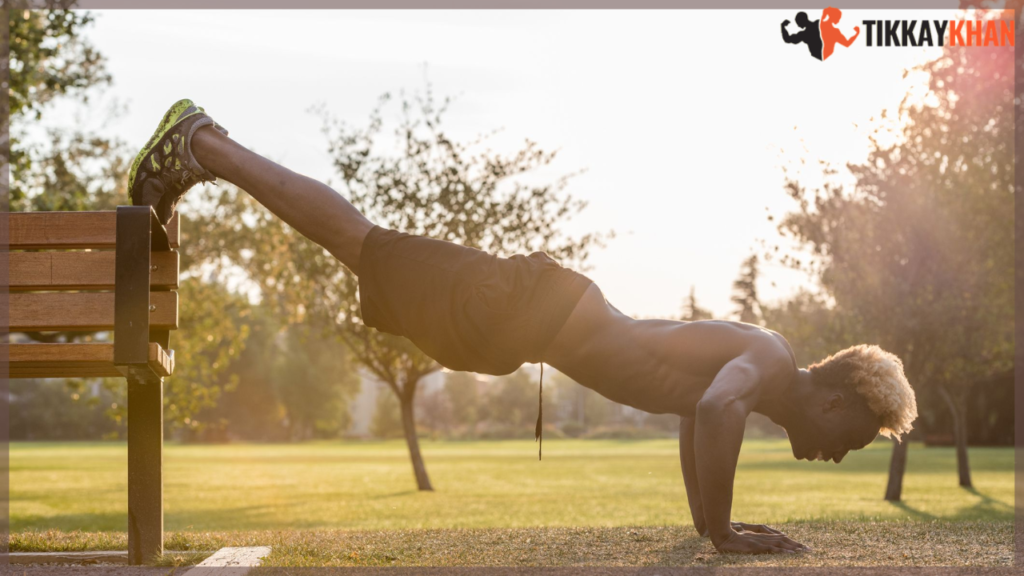T-pushups are a great way to build upper body strength, especially in your chest and core muscles. They are challenging exercises, but they are also very rewarding. If you are looking for a way to improve your fitness, T-pushups are a great option.
How to do a T-Pushup

- Start in a high plank position with your hands shoulder-width apart and your body in a straight line from your head to your heels.
- Lower your body until your chest touches the floor.
- As you push back up, rotate your body to the right so that your right arm is extended straight up in the air and your left arm is on the floor.
- Hold this position for a second, then rotate back to the starting position.
- Repeat on the other side.
Tips for doing T-Pushups
- Keep your core engaged throughout the entire exercise.
- Don’t let your hips sag.
- Keep your body in a straight line from your head to your heels.
- Don’t let your shoulders round forward.
- You can start with T-pushups on your knees if you’re a beginner.
T-Pushups Benefits

T-pushups are a great way to:
- Build upper body strength
- Strengthen your chest and core muscles
- Improve your balance and coordination
- Increase your range of motion
- T-pushups are a compound exercise that works simultaneously for multiple muscle groups.
- T-pushups are a great way to improve your balance and coordination.
- T-pushups can help you burn calories and lose weight.
- T-pushups can help you improve your cardiovascular health.
- T-pushups can help you reduce your risk of injuries.
- T-pushups can help you improve your mental health by relieving stress and anxiety.
- If you are new to T-pushups, start by doing a few sets of 10-12 repetitions. As you get stronger, you can increase the number of sets and repetitions.
T Push-up Modification
Easier
- T-pushups on your knees. This is a great modification for beginners. To do this, start in a high plank position with your knees on the ground. Lower your body until your chest touches the floor, then push back to the starting position.
- Incline T-pushups. Place your hands on a raised surface, such as a bench or a step. This will make the exercise easier by reducing the weight you have to lift.
More Challenging
Diamond Push-Ups

To do this, place your hands closer together than shoulder-width apart. This will make the exercise more challenging for your chest and triceps.
Wide Push-Ups

To do this, place your hands wider than shoulder-width apart. This will make the exercise more challenging for your shoulders and chest.
Decline Push-Ups

Place your feet on a raised surface, such as a bench or a step, to do this. This will make the exercise more challenging by increasing the amount of weight that you have to lift.
T-Pushups with a Weight Vest
To make the exercise more challenging, you can wear a weighted vest. This will add weight to your body, making the exercise more difficult.
T-Pushups with a Resistance Band

To make the exercise more challenging, you can attach a resistance band to your waist and hold the ends of the band in your hands. This will create resistance as you lower your body, making the exercise more difficult.
Choosing a modification that is challenging enough to help you progress is important but not so challenging that it causes you pain. If you are unsure which modification is right, it is always best to consult a qualified fitness professional.
T-Pushup Muscles Worked
T-pushups are a great way to work your chest, shoulders, triceps, and core. They are compound exercise that works simultaneously for multiple muscle groups.
The main muscles worked in T-pushups are:
- Chest: The chest muscles (pectoralis major and minor) push the arms away from the body. They are used throughout the entire T-pushup, from the lowering to the pushing phase.
- Shoulders: The shoulder muscles (deltoids) lift the arms up and out to the sides. They are used during the lowering phase of the T-pushup when you rotate your body to the side.
- Triceps: The triceps are the muscles on the back of the upper arms. They are responsible for extending the elbows, which is what you do when you push back up to the starting position of the T-pushup.
- Core: The core muscles (abdominals, obliques, and lower back) maintain stability and balance. They are used throughout the entire T-pushup, from the lowering to the pushing phase.
In addition to these major muscle groups, T-pushups also work several smaller muscle groups, including the forearms, wrists, and hands.
T-Pushups Variations

There are many different variations of T-pushups that you can do to challenge yourself. Some popular variations include:
Diamond Push-Ups

These are done with your hands closer together than shoulder-width apart. This makes the exercise more challenging for your chest and triceps.
Wide Push-Ups

These are done with your hands wider than shoulder-width apart. This makes the exercise more challenging for your shoulders and chest.
Incline Push-Ups

These are done with your hands on a raised surface, such as a bench or a step. This makes the exercise easier on your shoulders and chest.
Decline Push-Ups

These are done with your feet on a raised surface, such as a bench or a step. This makes the exercise more challenging for your shoulders and chest.
Conclusion
If you have any health conditions, talk to your doctor before doing T-pushups. Stop the exercise and consult a doctor or physical therapist if you feel pain. Be sure to warm up before doing T-pushups and cool down afterward. With proper form and technique, T-pushups can be a safe and effective way to improve your fitness.